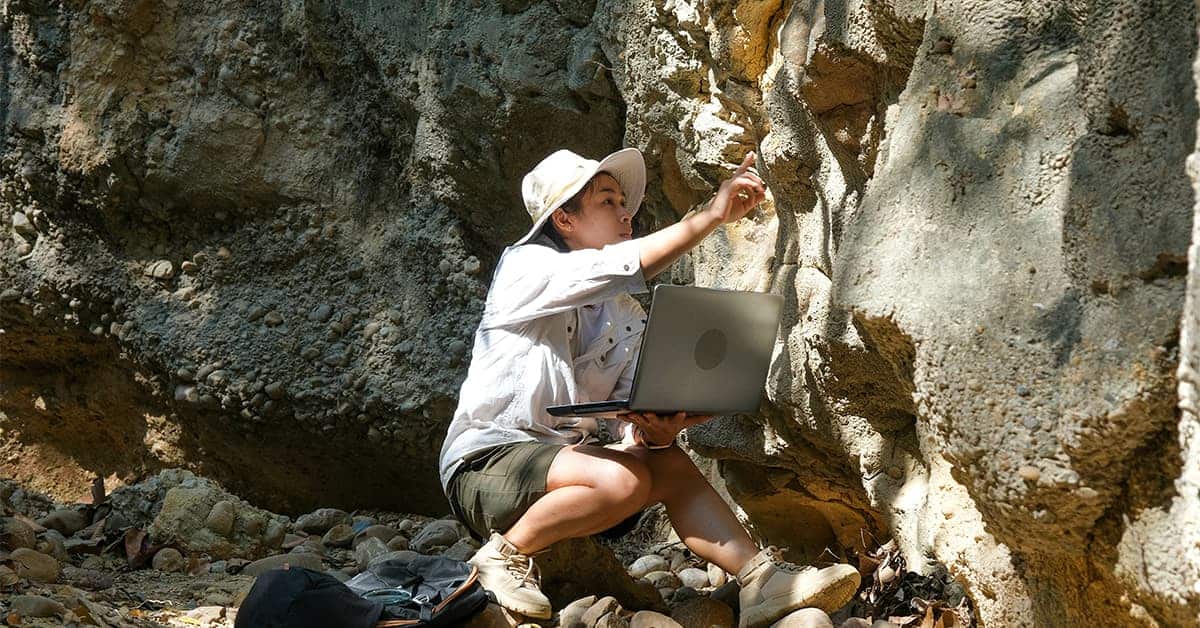by Tom Harris, America Outloud:

Have you ever noticed how rarely we see geologists interviewed in the press about climate change? We often hear from excited meteorologists, biologists, chemists, sometimes physicists, and of course, the ubiquitous climate modelers (who pretend to know what the climate will be in 100 years) on TV and in newspapers when the media bothers to interview scientists at all. But almost never do we see interviews with scientists who study what actually happened in the real world when carbon dioxide (CO2) was many times higher than today.
TRUTH LIVES on at https://sgtreport.tv/
The reason is simple: most geologists simply do not buy into the climate scare at all. They understand that, even with a 50% rise in CO2 since 1880, today’s level of the gas is very low in comparison with most of the geologic record. They also know that, despite a 1.2-degree Celsius rise in the so-called global average temperature since 1880, we actually live in unusually cold times. Indeed, we are still in the Quaternary glaciation, or ice age, that started about 2.58 million years ago.
Within the current ice age (yes, we are in an ice age right now, as there is permanent ice cover in various locations), there have been several periods of glaciation and interglaciation. The Last Glacial Period extended from about 11,700 – 115,000 years ago, with a peak glaciation at 20,000 years ago. We have, very fortunately, been in the Holocene interglacial warm epoch for the past 11,700 years, a time frame that has been punctuated with periodic cold periods, the Little Ice Age from the early 14th century (when the Greenland Viking colonies perished, and crop failures, famines, social unrest, migrations, wars, and cultural changes occurred across the world) to the mid 19th century being the most recent example. Indeed, it is during cold periods that we have by far the most troubles.
Consider the following graph geologists use to display temperature and CO2 levels during the past half billion years, the farthest they can go back in time with fossilized seashell oxygen isotope dating for temperature determination. Before that, most marine animals had soft bodies with no shells and so did not leave very many fossils.
The first thing that jumps out at you is that CO2 and temperature are all over the map showing no consistent correlation at all. At times, for example, 450 million years ago, CO2 dropped, yet temperature rose suddenly. That was an interesting time period since we were in the midst of a “Cold House” period far longer and far colder than an ice age or a glacial period, indeed, the coldest time in the entire record, yet CO2 was ten times today’s level. The whole Earth, including the oceans, may have been completely covered with ice.
Or have a look at the period between 120 million and 70 million years ago. CO2 was dropping continuously, yet the temperature stayed about the same for that whole time frame.
Geologists also note that today we are at one of the lowest levels of both temperature and CO2 in the past 550 million years. They also see that Earth’s temperature has remained at a steady 25 degrees C, or about 77 degrees Fahrenheit. Even after it was interrupted by three cataclysmic cooling events, the temperature bounced back up to this steady 77 degrees F.
Also of note is that starting 175 million years ago, CO2 levels were in a steady decline. Had we not started to burn coal, oil, and natural gas, this decline would almost certainly have dropped below the 150 parts per million level at which plants, and therefore all life on Earth, die. The CO2 has been used by corals, crabs, clams, marine plankton, and other calcifying animals, with much of it now locked up in limestone rocks, such as the White Cliffs of Dover and the Alps. Geologists know that by helping boost CO2 to today’s 420 ppm, we have saved life on Earth with our use of hydrocarbon fuels and cement production.
Read More @ AmericaOutloud.news




